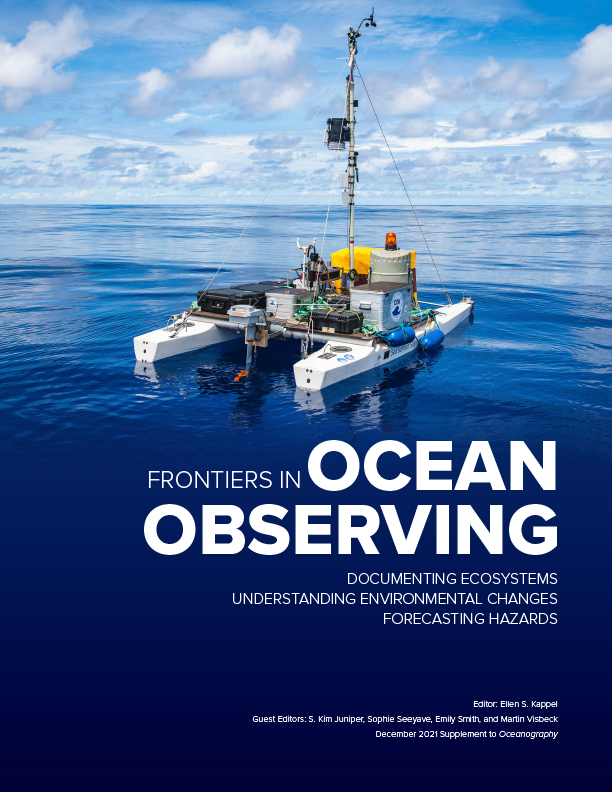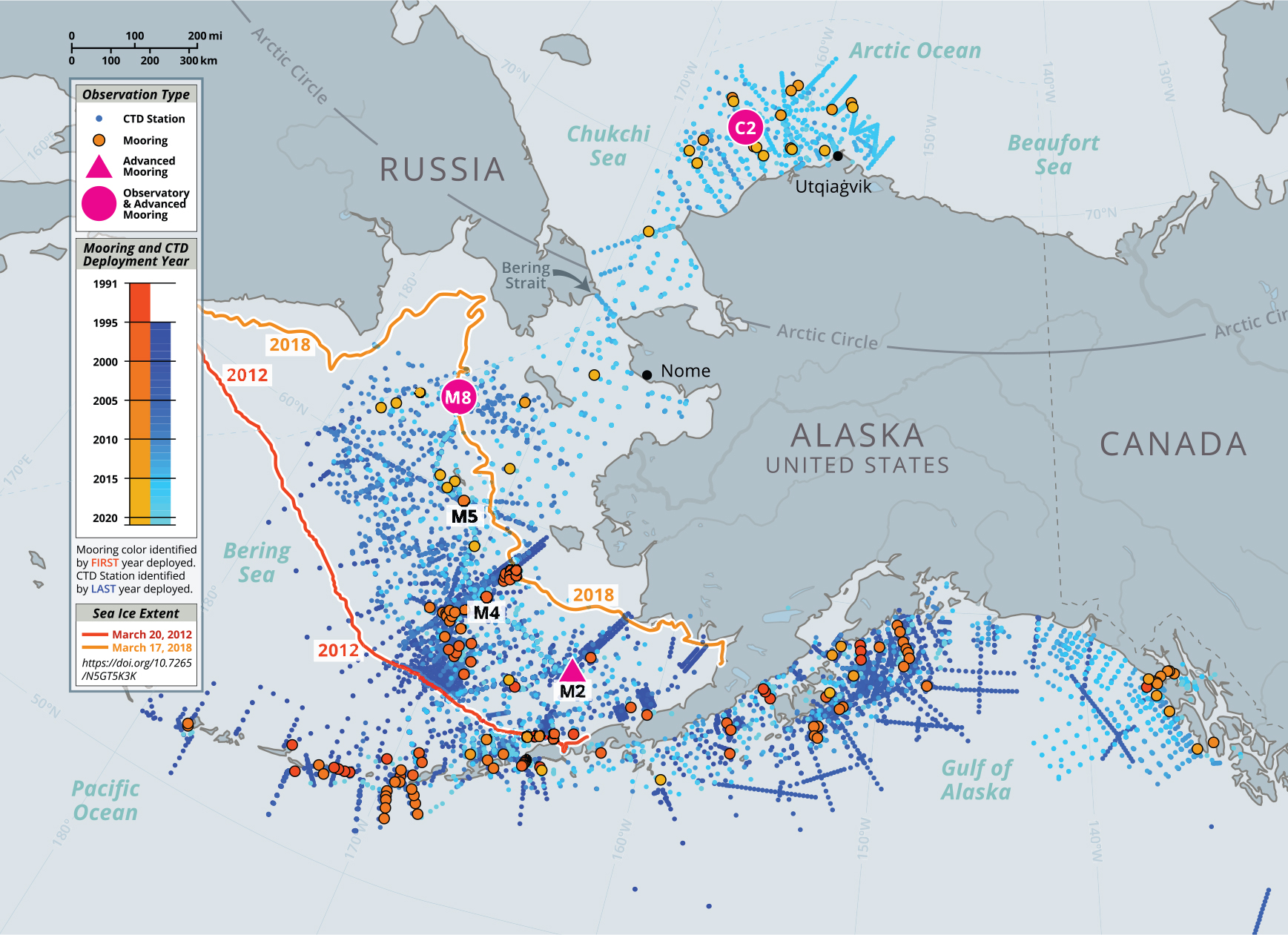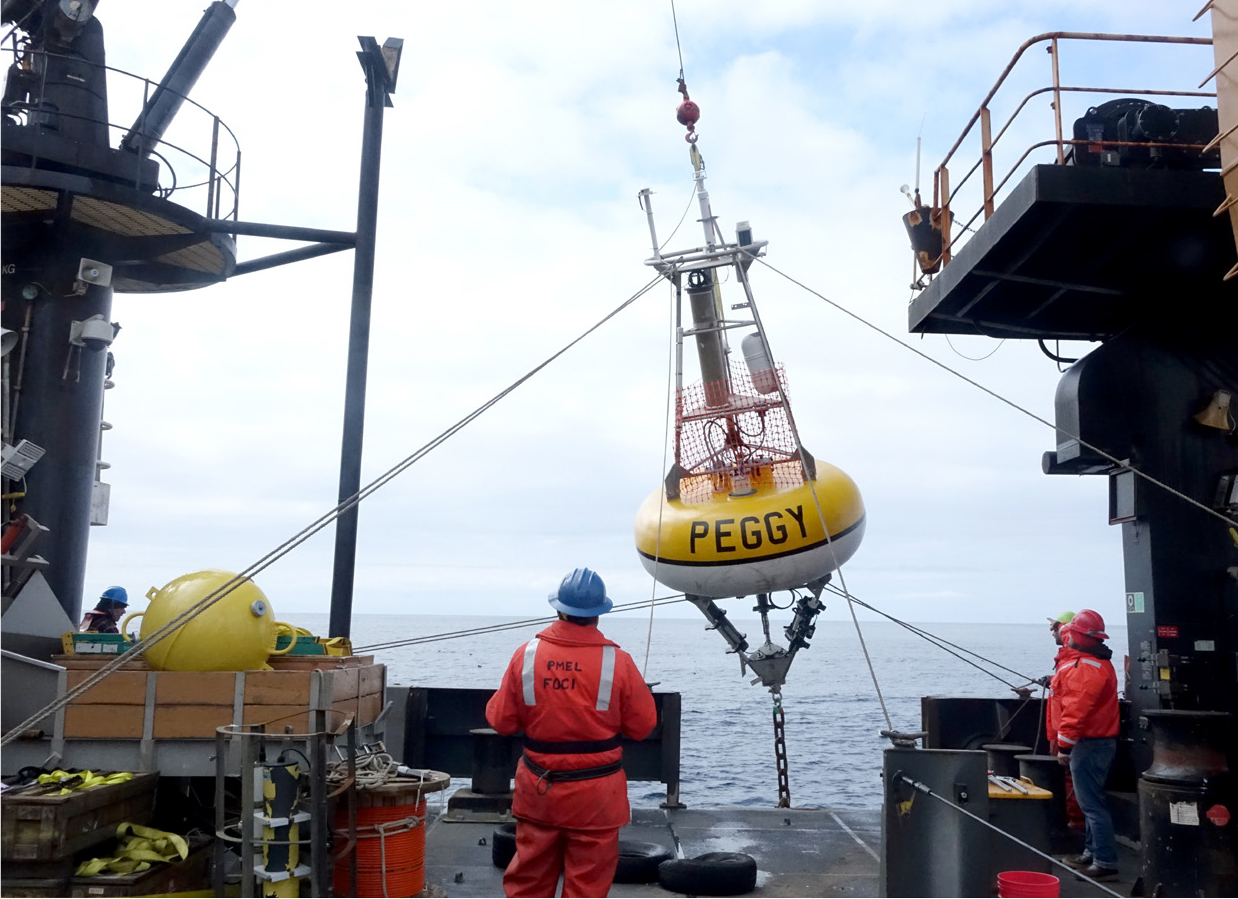Full Text
Long-term monitoring and data collection provide the foundational knowledge and context for understanding how climate change impacts Alaskan marine ecosystems. A generation of ocean observing by the US National Oceanic and Atmospheric Administration (NOAA) Ecosystems and Fisheries Oceanography Coordinated Investigations (EcoFOCI) is at the forefront of detecting regional and global climate change and its impacts on ecosystems (Figure 1). Using a variety of observing tools, including research vessels and mooring arrays, and continuous integration of new technology, the program’s advances in marine science have provided contextual information to enable direct and effective management and sustainable use of fisheries resources in the Bering Sea. EcoFOCI was thus poised to address emergent physical and biological questions arising from an unprecedented loss of winter sea ice in the US Arctic in 2018 and 2019.
|
|
From Cold Pool to Cold Puddle: Sea-Ice Thickness, Duration, and Extent Are on the Decline
A suite of long-term observations has shown that sea ice shapes the Bering Sea ecosystem. Ice presence in winter kick-starts the production of spring algae and zooplankton, which in turn provides the food base for the region’s vast international fisheries. Historically, cold winter winds drove ice southward across the Bering Sea shelf, creating extensive ice that could cover an area larger than Texas and California combined. But recent shifts in wind patterns have altered the historical dynamics of ice, algae, plankton, and fisheries. In 2018, winter winds began to blow from the south and last for a month or more, allowing warm air to push against the ice and prevent its southward advance (Stabeno and Bell, 2019). Such changes were predicted to occur as part of long-term climate change—but not for another 30 years (Stabeno and Bell, 2019).
The bottom layer (~30 m deep) of the water column on the eastern Bering Sea shelf, where temperatures remain below 2°C, is known as the cold pool, and it is determined by sea ice extent. In a cold year, like 2012, it extends ~200 km (a third of the shelf width). The cold water creates a barrier for commercially important fish species like Pacific cod and pollock that prefer warmer waters. As a result, the fish are usually confined to the southeastern Bering Sea and the outer shelf. The 2018 shifts in wind patterns resulted in the smallest cold pool on record (Stabeno and Bell, 2019), and conditions in 2019 were similar. Near-bottom temperature measurements from EcoFOCI moorings, while cold, were the warmest on record in 2018 (Stabeno and Bell, 2019). This revealed a “cool” pool in parts of the northern Bering Sea earlier in summer that did not last. The dynamics of how the cold pool shrinks, or becomes a puddle, are not fully understood. The lack of ice in 2018 led to the latest spring bloom on record in the northern Bering Sea, impacting the base of the food web and the commercial fisheries it supports.
Increased Warm Temperatures Could Alter the Basic Structure and Function of the Food Web, but Not Everything Is Behaving as Predicted
It was thought that ocean warming would open up the northern Bering Sea to pollock and Pacific cod, potentially supporting a larger, more productive fishery. The dramatically small cold pool in 2018 and 2019 did result in large numbers of adult Pacific cod and pollock emerging in the northern Bering Sea in the summer months. However, ecosystem surveys showed that species of oceanic plants and animals at the base of the food web also changed, with associated lower food production and reduced food quality (Duffy-Anderson et al., 2019). In addition, fish such as herring were found in low numbers. Seabirds died off, and numbers of marine mammals such as seals and whales were reduced. These impacts reach farther, to the Chukchi Sea, where local communities are feeling the changes (Huntington et al., 2020).
Physical oceanographic data such as temperature and salinity collected in the water column by moored instruments, and biological samples collected from ships, help demystify the connections between the distinct regions of the US Arctic. By 2020, the M2 “Peggy” mooring had been collecting oceanographic data in the Bering Sea for a quarter century, creating one of the longest time series in the world ocean (Figure 2). This mooring, coupled with three other long-term moorings (M4, 1999; M5, 2005; M8, 2005) and newly initiated observatories, cover more than 1,000 km and provide near-continuous, year-round measurements of the water column in this region (Figure 1). New technologies are continually incorporated into these observing systems, strengthening foundational science and improving stewardship of ocean resources in these remote and complex ecosystems. The real-time data from these observatories are also integrated into forecasts and models.
|
|
EcoFOCI provides information that supports management and sustainable use of fisheries resources. For instance, studies in 2016–2017 directly influenced decision-making by the North Pacific Fishery Management Council in determining the pollock catch and contributed to documents used by management and stakeholders to evaluate current ecosystem status and project near-future conditions. The program also predicted the collapse of the Pacific cod population in the Gulf of Alaska following the 2015 marine heatwave (the “blob”).
US Arctic waters are transforming faster than anticipated. It is imperative that the importance of ocean observing, including traditional knowledge, is at the forefront of understanding "what change is." EcoFOCI will continue to examine trends related to changing ecosystems and climate and address critical topics for resource managers in this rapidly evolving system.



